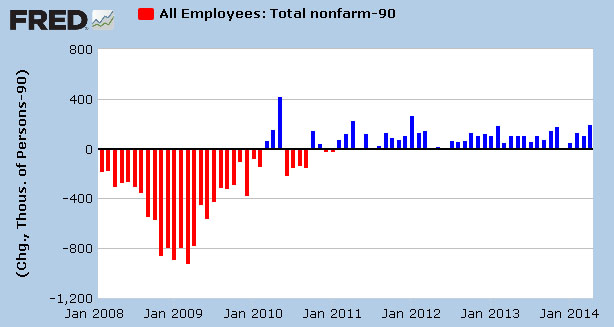The American economy added 288,000 new jobs in March, but about 90,000 of those jobs were needed just to keep up with population growth, so net job growth clocked in at 198,000. The headline unemployment rate plummeted from 6.7 percent to 6.3 percent.
This is a decent result except for one thing: the unemployment rate went down because a ton of people dropped out of the labor force and are no longer counted in the totals. Nearly a million people dropped out, causing the labor force participation rate to plunge from 63.2 percent in March to 62.8 percent in April. The participation data is fairly volatile on a monthly basis—it went up 0.4 points during the first three months of the year and then dropped 0.4 points in April—but this is nonetheless a large and disconcerting decline that puts a serious damper on the otherwise good unemployment news.
Why? Well, some of the decline in the participation rate is just due to older workers retiring, but probably not that much of it. Rather, the BLS suggests that it’s mostly due to an unusual dip in the number of new entrants to the labor force, which is hardly good news. In addition, I suspect a big chunk of it is due to unemployed workers who have given up looking for jobs, though I acknowledge that the data doesn’t support this.
So: a mixed result. The jobs number is fairly decent. The labor force number is troubling. We’re still puttering along, but not much more.


















